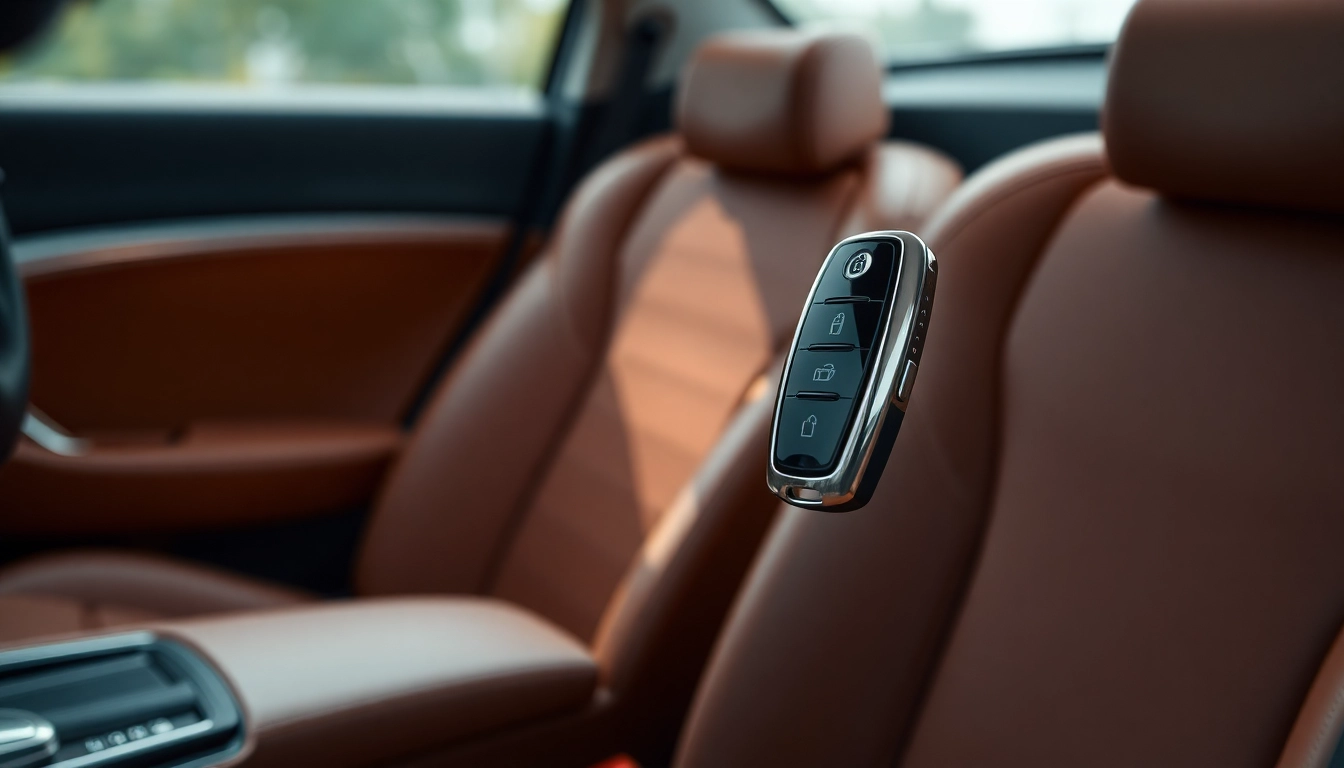Introduction to Keyless Carkeys
In an era where technology is constantly evolving, the automotive industry has not been left behind. One of the key advancements has been the introduction of Keyless Carkeys, which have transformed how we interact with our vehicles. Unlike traditional keys, keyless entries offer convenience and increased security through advanced technological features. This article will explore their workings, benefits, common issues, and future trends, providing you with a comprehensive understanding of these modern automotive solutions.
What are Keyless Carkeys?
Keyless Carkeys, as the name suggests, allow you to access and start your vehicle without the need for a conventional key. Instead, these systems utilize a combination of proximity and secure electronic signals. The key fob or smart key communicates with the vehicle’s transponder system to lock, unlock, and even start the engine with a simple press of a button. This innovation has not only streamlined the process of entering and operating a car but has also introduced unique functionalities that enhance the driver’s experience.
Benefits of Using Keyless Carkeys
The benefits of adopting Keyless Carkeys extend beyond mere convenience. Below are some of the notable advantages:
- Convenience: You can unlock your car doors and start the engine without fumbling for keys, enhancing the experience especially when your hands are full.
- Enhanced Security: Many keyless systems use encrypted signals, making it harder for thieves to duplicate or spoof your keys.
- Increased Control: Keyless entry systems can offer additional control features such as remote start or trunk release, all designed to provide an easier access to your vehicle.
- Anti-Theft Features: Most systems come with immobilizer technology that prevents unauthorized access to your vehicle, offering peace of mind.
How Keyless Carkeys Work
The workings of Keyless Carkeys can be broken down into a few core components:
- Key Fob: The device typically contains a battery, electronics, and an RFID chip that communicates with the car.
- Proximity Sensors: These sensors detect when the key fob approaches. When within a specified range, the vehicle unlocks automatically.
- Engine Start System: Some systems utilize push-button ignition, allowing the driver to start the engine without inserting the key.
- Wireless Communication: The system communicates via short-range radio frequencies, ensuring a secure and efficient transfer of information.
Types of Keyless Carkeys
Remote Keyless Entry
Remote Keyless Entry (RKE) allows you to unlock or lock your vehicle from a distance. When you press a button on your key fob, it sends a coded signal that the car’s receiver interprets to execute the required command.
Smart Key Systems
Smart Key Systems are more advanced and offer features like passive entry, where the car can automatically unlock when it detects the key fob nearby. This technology typically includes additional security measures to prevent unauthorized access and starting of the vehicle.
Wireless Key Fobs
Wireless key fobs are compact devices that use radio frequencies to communicate with the vehicle. These fobs have functionalities that may include panic buttons, remote start, and trunk release. They are an essential part of both RKE and smart key systems.
Common Issues with Keyless Carkeys
Battery Life and Replacement
One of the most common issues with Keyless Carkeys is battery life. While key fobs are designed to last for years, the battery eventually depletes, leading to malfunction. Regular checks and being aware of warning signs—like reduced range—can help you avoid being stranded.
Frequency Interference Problems
Keyless systems operate via radio frequencies, which can sometimes be disrupted by other electronic devices or signals. If you ever find that your key fob is not functioning properly, it may be due to interference. Standing near certain electronic devices or being in a heavily congested area can contribute to these issues.
Programming Issues
Another common challenge arises during the programming of new key fobs. Whether replacing an old fob or acquiring an additional one, improper programming can lead to an inability to access your vehicle. Following the manufacturer’s guidelines is crucial, and consulting professionals can save time and hassle.
Maintenance Tips for Keyless Carkeys
Checking Battery Health
Regular maintenance of your Keyless Carkeys includes checking the battery life of your key fob. Consider replacing the battery proactively every couple of years, and keep an eye out for indicators that your fob is losing power, such as a delayed response.
Storing Your Keyless Carkeys Safely
Proper storage is crucial for the longevity of keyless carkeys. Keeping them in a designated spot—free from electronic interference—is essential. Using signal-blocking pouches can also add an extra layer of security against potential theft.
Software Updates for Key Systems
Just as smartphones require software updates, keyless entry systems may need updates to ensure optimal functionality and security. Consulting your vehicle’s manual and visiting authorized service centers can ensure your system is up-to-date.
Future Trends in Keyless Carkeys Technology
Emerging Features to Look For
As technology continues to progress, keyless entry systems are expected to integrate new features. Innovations like gesture controls, biometric recognition, and improved mobile app functionalities promise to enhance convenience and security.
Innovations in Security Measures
With the rise in vehicle thefts, manufacturers are prioritizing security innovations. Future keyless systems may employ advanced encryption methods, multiple authentication factors (such as biometric data), and enhanced anti-theft technologies.
Integration with Smartphone Technology
The integration of keyless car functionalities with smartphone applications is another trend on the horizon. The ability to control vehicle access, monitor security features, and even start the engine from a mobile device represents a huge leap forward in user convenience.


